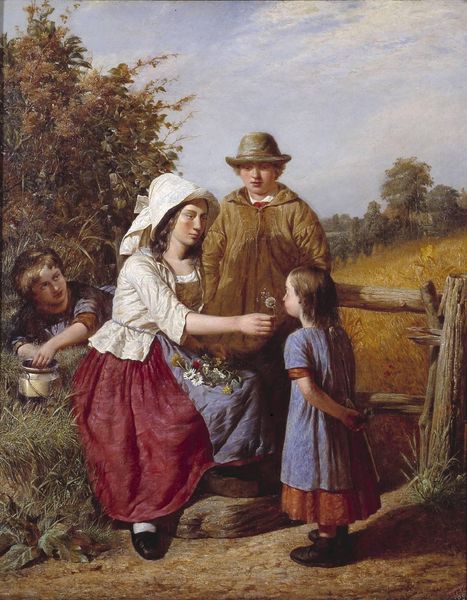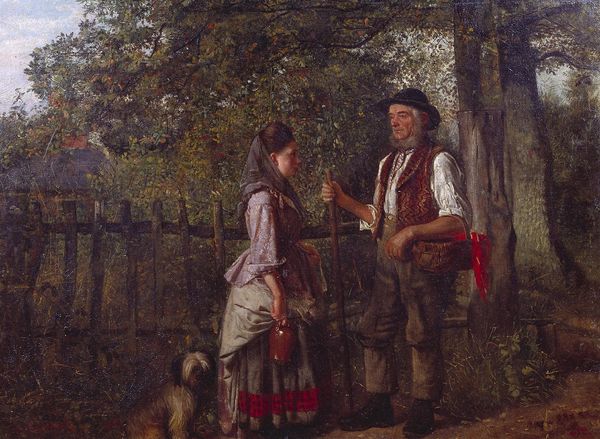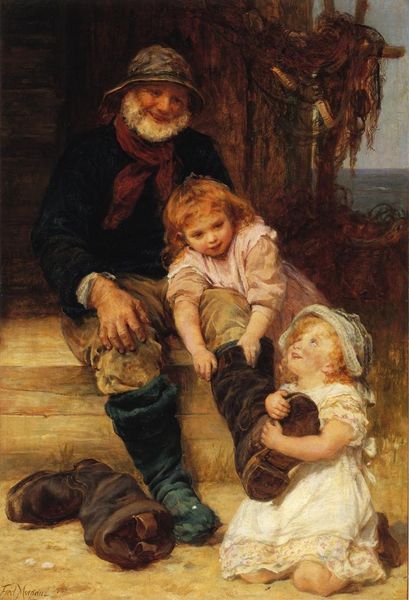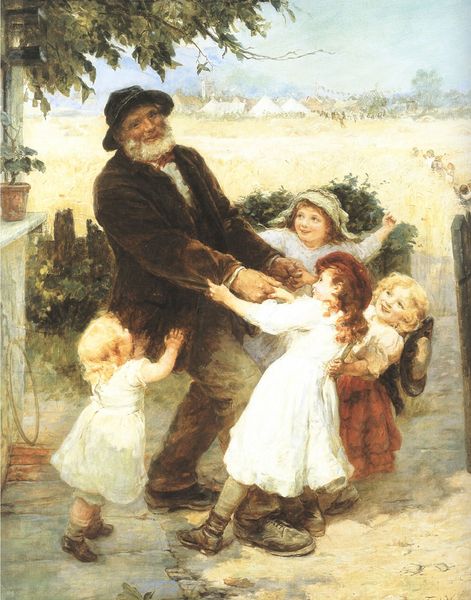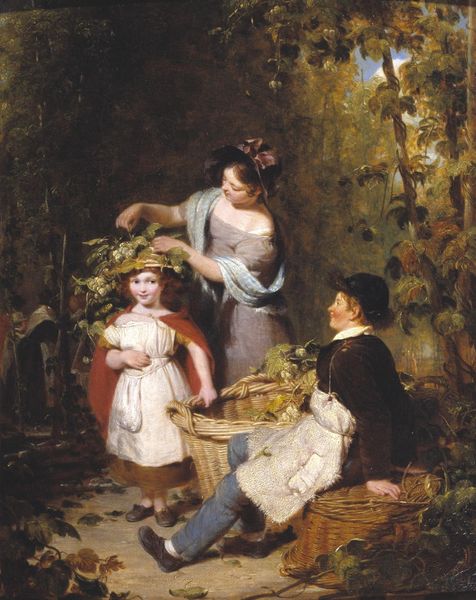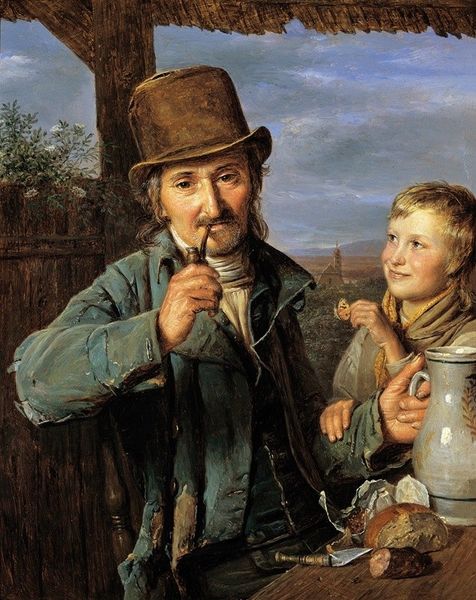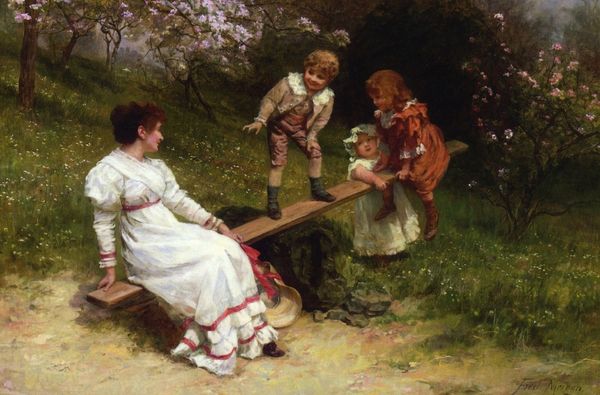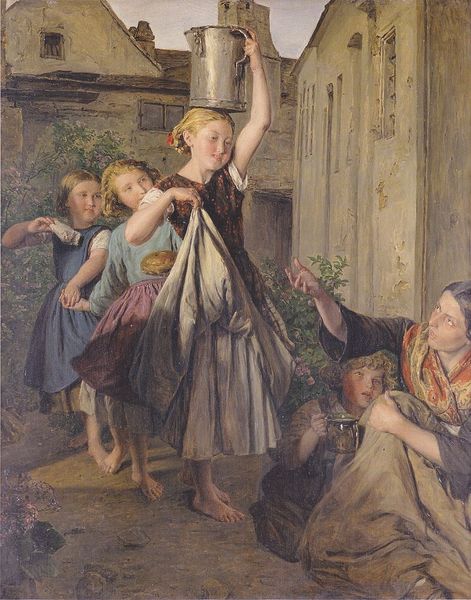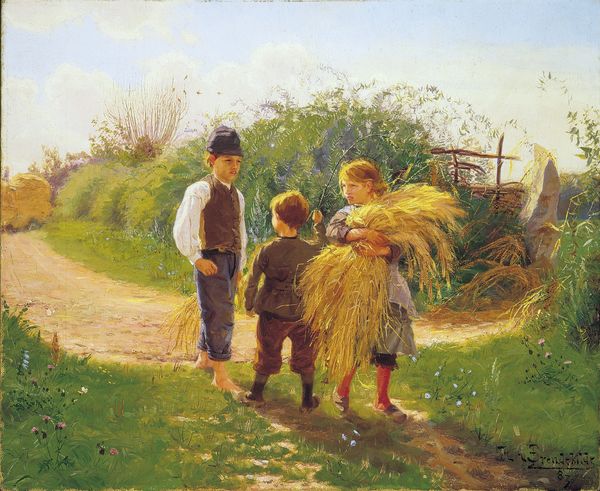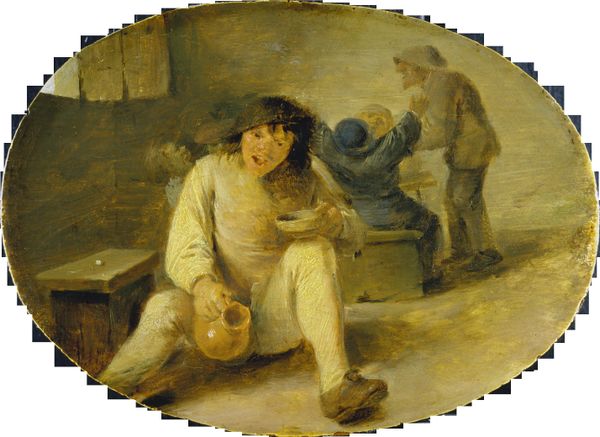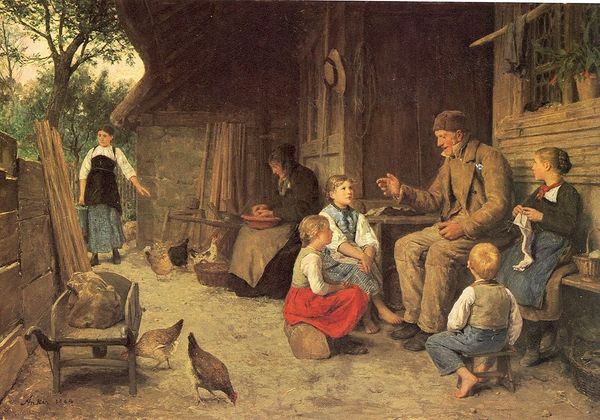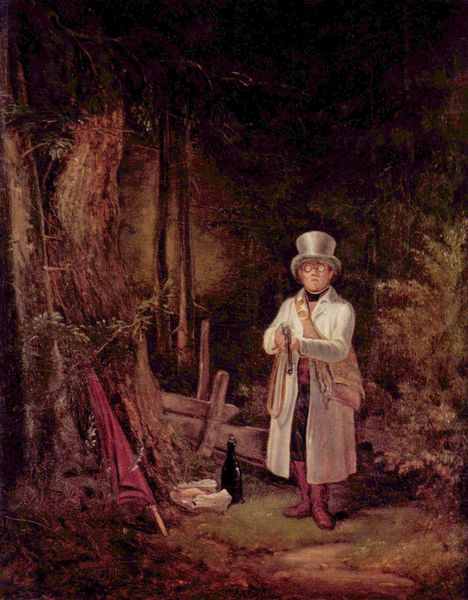
Copyright: Public Domain: Artvee
Curator: Looking at this canvas, what strikes you first? Editor: It feels…earthy. All these muted browns and greens, and the palpable texture of the man’s clothes, make me want to touch the painting. Curator: That sensation is apt, given we're observing James Jebusa Shannon's 1884 oil painting, “The Cowslip Gatherer." Editor: So "The Cowslip Gatherer", huh? Those kids by the stone archway seem a bit wary of him; what can you tell me about that particular social dynamic being displayed in this artwork? Curator: Genre paintings like this were quite popular, offering glimpses into everyday life. Consider the social commentary, here. The flower gatherer’s clothing indicates the working class versus the assumed privileged status of the young ladies based on the scene in which they are portrayed. This suggests a subtle negotiation between the economic disparity represented through the people shown on canvas. Editor: Right, and those material conditions tell us so much. Just look at his patched clothes, that heavy-looking basket filled with wildflowers… it screams physical labor. Were these paintings just sentimental fluff, or were they trying to say something more? Curator: Many genre scenes sought to elicit empathy or even guilt in the viewer regarding class structures. The man appears neither menacing nor particularly joyous, simply occupied by his task. This leaves it up to the audience of the time and today, to think through the position each class plays in social roles. Editor: Interesting. And in terms of how this object, this artwork, was consumed—do we know how and where someone like Shannon sold these sorts of paintings? Curator: Often exhibited in galleries catered toward the middle and upper classes, perhaps creating a type of visual commodity reflecting social issues for an elevated consumer audience to appreciate the scene, which likely was outside the scope of their daily interactions. It raises a series of social, and perhaps uncomfortable truths, about the period for its time and beyond. Editor: All this talk about economic factors definitely enriches my experience with Shannon’s work. It helps clarify those initial sensations regarding composition and texture with an insight to materiality. Curator: Indeed; hopefully, such considerations may provoke further reflections on labour, value, and perspective across classes, today.
Comments
No comments
Be the first to comment and join the conversation on the ultimate creative platform.
